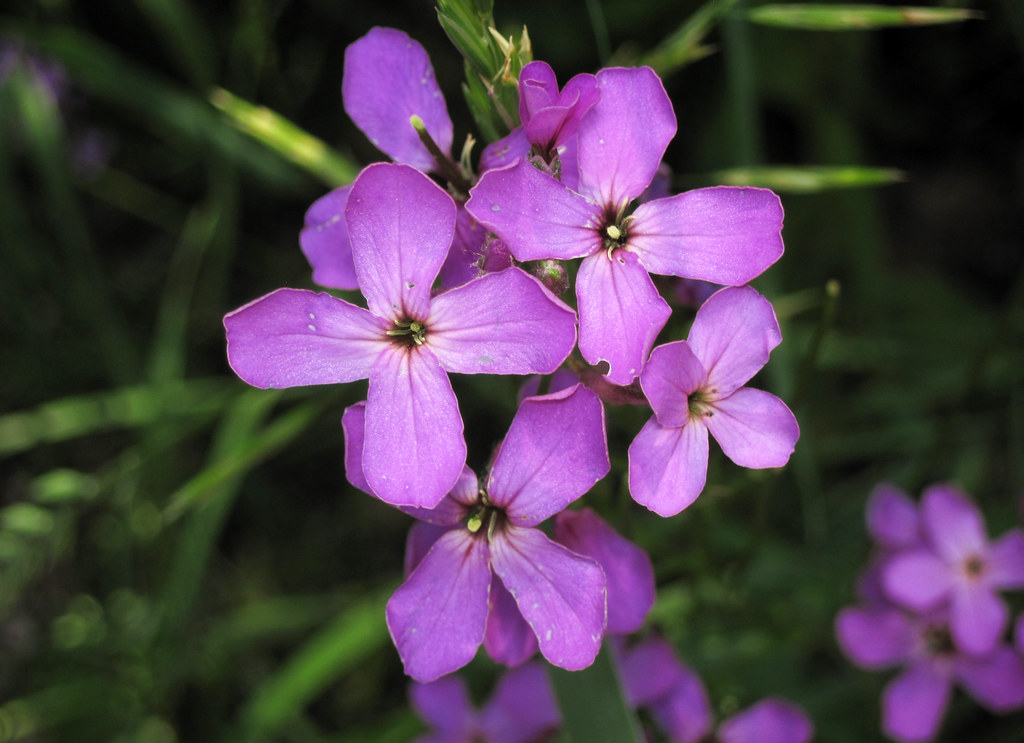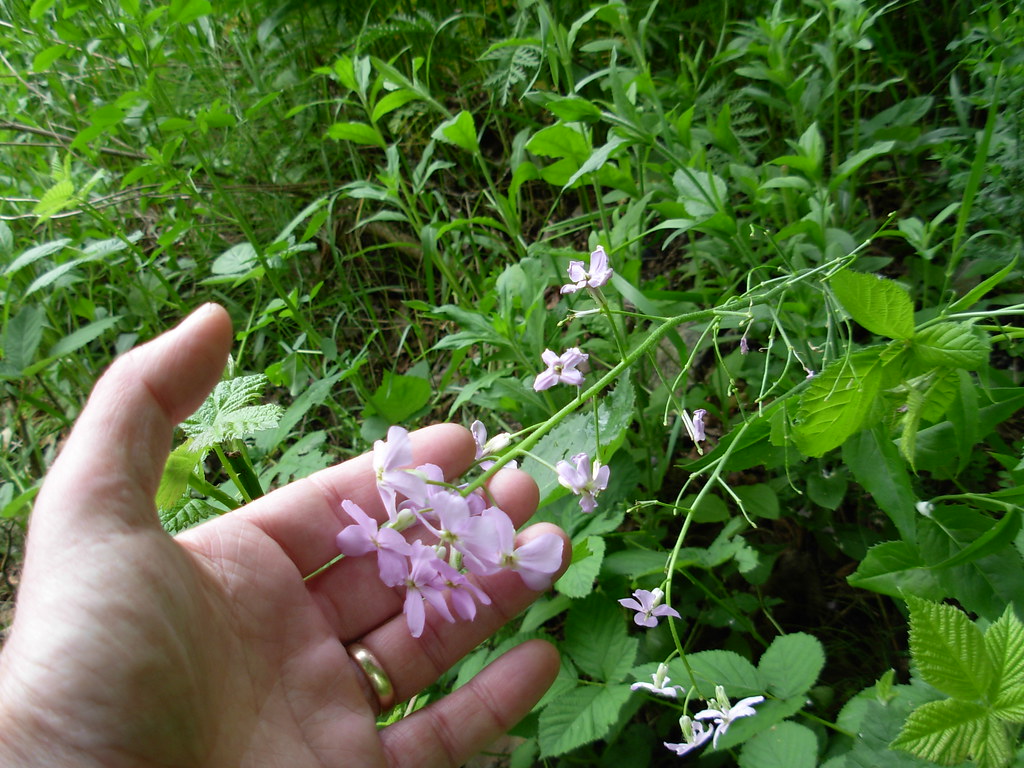Growing and Caring for Dame’s Rocket: A Comprehensive Guide

Are you looking to add a burst of color and fragrance to your garden? Look no further than Dame’s Rocket (Hesperis matronalis), a beautiful and easy-to-grow flowering plant. In this comprehensive guide, we’ll cover everything you need to know about growing and caring for Dame’s Rocket, from planting to maintenance and more.
What is Dame’s Rocket?
Dame’s Rocket, also known as Sweet Rocket or Mother-of-the-Evening, is a biennial or short-lived perennial plant native to Eurasia. It belongs to the Brassicaceae family, which includes other popular garden plants like broccoli, kale, and mustard greens. The plant typically grows 2-4 feet tall and produces clusters of fragrant, four-petaled flowers in shades of purple, pink, or white during late spring to early summer.
Why Grow Dame’s Rocket?

There are several reasons why gardeners love to grow Dame’s Rocket:
- Easy to Grow: Dame’s Rocket is a low-maintenance plant that thrives in a variety of soil types and light conditions.
- Attractive Flowers: The showy, fragrant blooms add a pop of color to any garden and attract pollinators like bees and butterflies.
- Versatile: Dame’s Rocket can be grown in borders, beds, or as a background plant in cottage-style gardens.
- Self-Seeding: Once established, Dame’s Rocket will self-seed and come back year after year with minimal effort.
Growing Dame’s Rocket from Seed
One of the easiest and most cost-effective ways to grow Dame’s Rocket is from seed. Here’s how:
- Start seeds indoors 6-8 weeks before the last expected frost date in your area.
- Fill seed trays or pots with a well-draining seed-starting mix and sow the seeds about 1/4 inch deep.
- Keep the soil moist but not soggy and place the trays in a warm, bright location.
- Seedlings should emerge in 7-14 days. Once they have their first set of true leaves, thin them out to one seedling per pot.
- Harden off the seedlings by gradually exposing them to outdoor conditions over the course of a week.
- Transplant the seedlings outdoors after the last frost, spacing them 12-18 inches apart in a sunny or partially shaded location.
Alternatively, you can direct sow Dame’s Rocket seeds in your garden in early spring or fall. Simply scatter the seeds in your desired location and lightly cover them with soil. Keep the area moist until germination occurs.
Planting and Soil Requirements
Dame’s Rocket prefers well-draining soil that is rich in organic matter. The plant can tolerate a range of soil types, from sandy to clay, as long as it is not waterlogged. Before planting, amend the soil with compost or well-rotted manure to improve fertility and drainage.
When choosing a planting location, keep in mind that Dame’s Rocket prefers full sun to partial shade. In hot climates, the plant may benefit from some afternoon shade to prevent the flowers from fading too quickly.
Watering and Fertilizing
Dame’s Rocket has moderate water needs. Water the plant deeply once or twice a week, depending on rainfall and soil moisture levels. Avoid overwatering, as this can lead to root rot and other fungal diseases.
Fertilize Dame’s Rocket once a month during the growing season with a balanced, water-soluble fertilizer. Alternatively, you can apply a slow-release fertilizer at the beginning of the season to provide a steady supply of nutrients.
Maintenance and Care
To keep your Dame’s Rocket plants looking their best, follow these maintenance tips:
- Deadheading: Remove spent flowers regularly to encourage continuous blooming and prevent self-seeding if desired.
- Staking: Taller varieties may require staking or support to prevent them from flopping over, especially in windy or rainy conditions.
- Division: If your Dame’s Rocket plants become overcrowded or lose vigor, divide them in early spring or fall to rejuvenate them.
- Pest Control: Dame’s Rocket is relatively pest-resistant, but it may occasionally be affected by aphids, flea beetles, or powdery mildew. Use insecticidal soap or neem oil to control pests, and improve air circulation around the plants to prevent fungal growth.
Propagation
In addition to growing from seed, Dame’s Rocket can be propagated by division or stem cuttings.
To propagate by division, carefully dig up the plant in early spring or fall and separate it into smaller clumps, each with its own set of roots and leaves. Replant the divisions immediately and water them well.
To propagate by stem cuttings, take 4-6 inch cuttings from healthy, non-flowering stems in late spring or early summer. Remove the lower leaves and dip the cut end in rooting hormone. Plant the cuttings in a well-draining potting mix and keep them moist until roots form, which usually takes 4-6 weeks. Once rooted, gradually acclimate the cuttings to outdoor conditions before transplanting them into the garden.
Companion Planting
Dame’s Rocket makes an excellent companion plant for many other garden favorites. Its tall, upright growth habit and showy flowers complement a variety of plant shapes and colors.
Some great companion plants for Dame’s Rocket include:
- Peonies: The contrasting foliage and bloom times of Dame’s Rocket and peonies create a stunning display in late spring to early summer.
- Roses: The purple, pink, or white flowers of Dame’s Rocket pair beautifully with the wide range of rose colors available.
- Salvia: The spiky, vertical growth habit of salvia contrasts nicely with the rounded flower clusters of Dame’s Rocket.
- Poppies: The delicate, papery blooms of poppies float above the dense foliage of Dame’s Rocket for a charming cottage garden look.
Frequently Asked Questions
- Is Dame’s Rocket invasive? In some areas, Dame’s Rocket can self-seed prolifically and spread beyond its intended planting area. To prevent this, deadhead the flowers before they set seed or choose sterile varieties that do not produce viable seeds.
- How long does Dame’s Rocket bloom? Dame’s Rocket typically blooms for 4-6 weeks in late spring to early summer. Deadheading spent flowers can encourage a longer blooming period.
- Can Dame’s Rocket be grown in containers? Yes, Dame’s Rocket can be grown in large containers with adequate drainage holes. Use a high-quality potting mix and water the plants regularly to keep the soil evenly moist.
- Is Dame’s Rocket deer-resistant? While no plant is completely deer-proof, Dame’s Rocket is generally considered deer-resistant due to its strong fragrance and slightly bitter taste.
- Can Dame’s Rocket be used as a cut flower? Absolutely! Dame’s Rocket makes a lovely cut flower with a long vase life. Cut the stems in the morning when the flowers are just beginning to open and place them in a vase with fresh water and floral preservative.
Conclusion
Dame’s Rocket is a beautiful and easy-to-grow addition to any garden. With its showy, fragrant flowers and low-maintenance nature, it’s no wonder why this plant is a favorite among gardeners. By following the tips and guidelines outlined in this comprehensive guide, you’ll be well on your way to growing and caring for Dame’s Rocket like a pro. So why not add a touch of old-fashioned charm to your garden with this delightful flowering plant?





